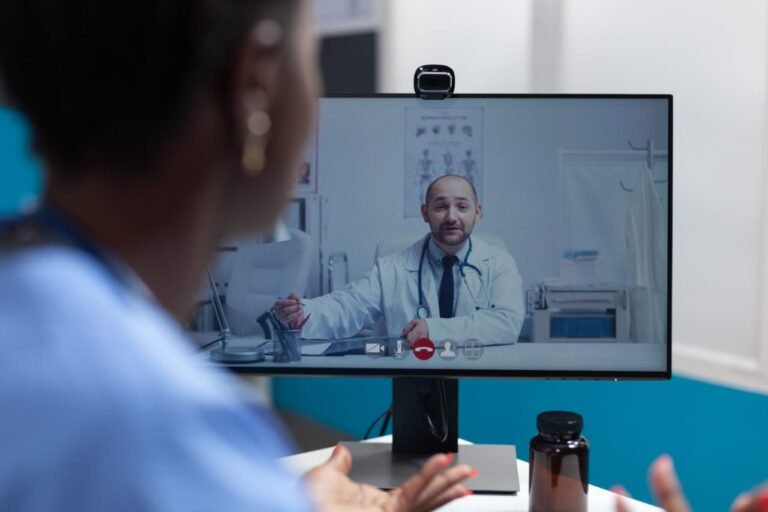Chronic illnesses, including diabetes, heart failure, hypertension, and chronic obstructive lung disease, are some of the most common causes of death and disability in the world. They also contribute a high share of healthcare expenses.
To adequately treat these conditions, a combination of constant monitoring, prompt actions, and the adherence of patients is often a challenging task to fulfill using a conventional face-to-face care model alone. Remote patient monitoring (RPM) has become an influential method of managing chronic diseases, as it provides an opportunity to enhance the outcomes of patients and minimize expenses.
Continuous Monitoring
The development of chronic illnesses can be silent and deteriorate rapidly without any symptoms. To cite an example, prevention of high blood pressure or high glucose levels would not create instant discomfort, but in the long run, would greatly predispose one to a heart attack, stroke, or kidney disease. Traditional care approaches were based on the regular visits of the doctor, which can result in significant intervals between the check-ups.
In such interruptions, the problems may emerge without being noticed. Remote monitoring helps to fill this gap by offering continuous supervision through which healthcare providers are able to intervene before issues get out of control.
Diabetes and RPM
One of the most vivid examples of the impact that RPM can have is diabetes management. CGM devices give a patient a chance to monitor his or her blood sugar levels in real-time. This information can be automatically submitted to medical teams, who can extract trends and alter the treatment regimens.
To the patients, this saves them the guesswork and anxiety involved in treating the condition. It also reduces the risk of severe complications such as hypoglycemia, hospitalization, or permanent organ injury.
Cardiovascular Diseases and RPM
Other chronic illnesses that can greatly benefit from remote monitoring include heart failure and hypertension. Heart failure patients usually have to measure their weight, blood pressure levels, and oxygen levels to identify fluid accumulation or weakening of the heart. RPM devices would be able to measure these aspects on a daily basis and notify healthcare providers of the initial signs of worsening.
This enables immediate medication corrections or interventions, which could help avoid hospitalisation. RPM is used in the situation of hypertension to enable providers to evaluate the efficacy of prescribed treatment and enhance medication adherence since patients become more knowledgeable about their health patterns.
Enhancing Patient Engagement
The effect on patient behavior is one of the frequent advantages of RPM that is not properly recognized in chronic disease management. By displaying the health data of their patients in real-time, patients receive a better insight into the impact of different lifestyle behaviors, including diet, physical activity, or medication compliance, on their well-being.
Such openness will make them more responsible regarding their health. In the long run, it leads to improved self-management and enhanced provider-patient relationships.
Savings in Cost and Healthcare Efficacy.
Chronic illnesses are costly to treat, especially when such illnesses result in emergency treatment or hospitalization. RPM lowers the risks of an expensive health crisis since it allows identifying and addressing them at an early stage. The healthcare systems will have fewer readmissions, reduced hospitalization, and resource utilization.
These benefits are becoming more and more accepted by insurers and government-provided programs, and thus, reimbursement of RPM services increases. The cost savings linked with RPM are bound to increase in the near future as it is adopted by more people.
Barriers to Adoption
Although the opportunities of RPM in the management of chronic diseases are evident, there are still barriers. Not all patients will use digital tools, especially older patients who might have issues with technology. The providers should also take into consideration the time and resources that they will need to deliver and administer RPM programs.
lso, it is important to provide data accuracy and reliability, as the efficiency of clinical decision-making may decline under the influence of the poor performance of the devices or human mistakes. Lastly, the issues of privacy and data safety are still a problem, with sensitive health data being transferred to digital platforms.
The Future of RPM in Chronic Disease Care.
The future of RPM is artificial intelligence and predictive analytics, which are going to make it more effective in managing chronic diseases. With the help of patient data analysis, AI is likely to detect minor shifts in the situation, which can point to potential aggravation of the conditions before it is too late.
Treatment plans could be created more accurately, and providers will be able to target those patients who are at the highest risk. Those who are not as tech-savvy will have a chance to benefit as the technology becomes more intuitive. Finally, RPM may also become a pillar of chronic disease treatment on a global scale.
Conclusion
Constant attention is needed in the management process of chronic diseases, and remote patient monitoring offers the means of attaining it. Ensuring real-time monitoring, improving patient engagement, cost reductions, and outcomes, RPM is a big leap towards healthcare.
Although there are still obstacles to adoption and implementation, the advantages of using it on both sides are undisputed. This is because, in the future, it may be impossible to treat chronic illness without the support of remote moni
